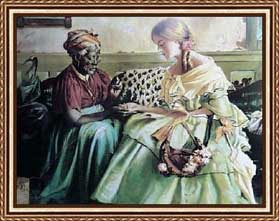|
A few months ago I even received an email from an Independent reader in Thailand who suggested that palmistry began with
Native American tribes in the US.
My reader suggests that Carl Jung wrote the forward to the book by Julius Spier, The Hands of Children,
and was remiss in not mentioning that Erich Neumann’s wife was an internationally know palmist.
Jung took an interest in palmistry, the reader points out, and regarded Neuman highly,
but didn't in all his letters or books mention his wife reading hands.
After writing to point this matter out, the reader continued:
"After traveling in Mexico and Europe and Asia I came upon something amazing I want to share with you.
The Navajo Indians read hands; just the fingertips.
They called them the "Holy Whorls.” To the Navajos, they were "wind prints" not "fingerprints",
as this is where the wind (life force) entered your body.
By reading these prints it enabled you to see someone’s life force and their character....
it’s amazing that after nine years of reading and traveling, I have never heard about the Navajos reading hands.
It was by accident [that] I stumbled on it. The Hopi Indians read the prints the same way."
|
|
For more on this theory of origins, and yet another tradition of interpretation,
see the book Holy Wind in Navajo Philosophy by James Kale McNeley.
Whatever occurred in the New World, you can see European manuscript pages from the fourteenth century on display in the British Museum,
if you ever get around to it.
In the Western tradition, the art evolved from basic lines, to hand shapes, to texture and markings.
Medieval writings focus on the lines. By the sixteenth century, the spirit of individuality was emerging.
Early Renaissance scholars were often well versed in palmistry, and markings for different kinds of patterns were devised.
|
The practice, still thought of as an art, was closely connected to astrology.
Each finger and mound was related to a planet. It was thought a whole constellation of one’s life could be read in the thumb.
So, when you go in for the art of divining, be sure you get your money’s worth. The whole story is not told in the lines.
Like the history of trauma, the history of palmistry is buried underground and often veers off course.
Its development has not unfolded in a linear fashion. In England, palmistry was not pursued with the same intensity as it was elsewhere.
Chiromancy was primarily associated increasingly with the gypsies. Universities did not pursue its scholarship and practice,
as did institutions of higher learning on the other continents.
If the gypsies came from the Pariahs of India, as some maintain, this would mean an alternate route of dispersion of Western knowledge.
Traveling from shire to shire in the 1500s, they performed all sorts of crafts to get money from the landholders;
palmistry being one such craft.
But a practitioner among the lower classes was considered to be either a gypsy or a witch,
thus the practice of palmistry merited death according to a law that was not repealed in England until the reign of George III.
Batya Weinbaum has been practicing as a palmist since the 1980s.
To get your palms read, call 216 233 0567.
PALM READING | PALMISTRY
 Find a Palm Reader in the USA! Find a Palm Reader in the USA!
Related sources:
www.theindependent.com
Benazir Bhutto palmprint of destiny
The history of Palmistry
The Simian Line!
HANDS IN THE NEWS
|
